LA BELLA VITA
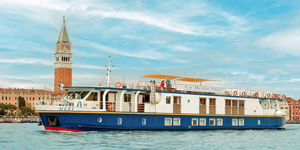
Venice & Lagoon, Bianca Canal, Po Valley
Up to 20 guests
Charters and Cabin cruises
Themed Cruises: Family, Gardens, Golf, Opera, Wine

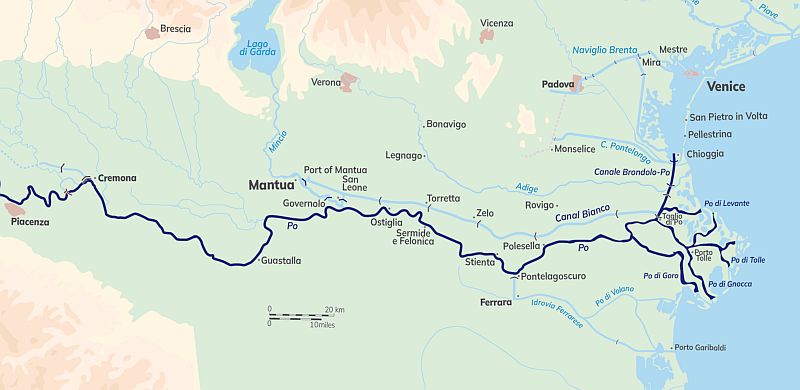
Map of the River Po, Italy
The River Po, Italy's longest river, flows through many important cities and towns through its 562km course, including Turin, Piacenza, Cremona, and Ferrara.
The Alberoni Dune Oasis holds one of the largest and best-preserved dune systems on the coasts of the North Adriatic Sea. With dunes as high as 10 meters tall and hiking trails crossing a large pine forest, unique species of flora and fauna create their habitat here.
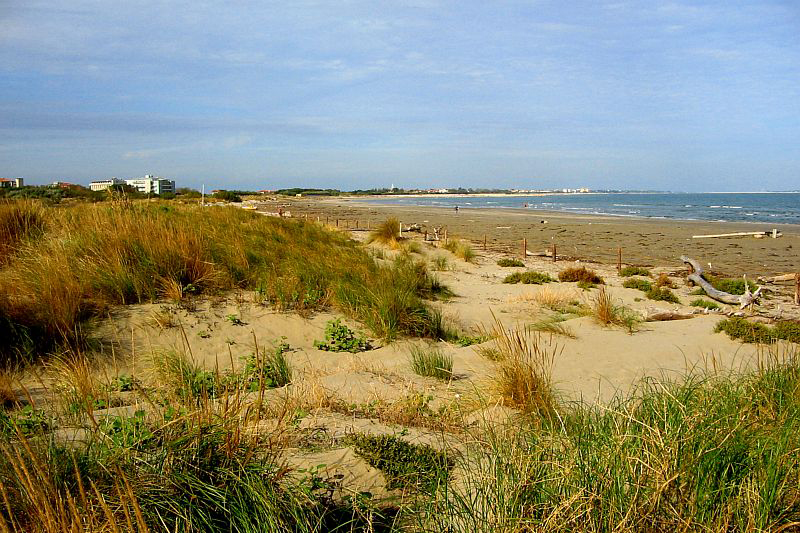
The Alberoni Oasis has some of the best preserved dunes on the Adriatic
Established in 1990, the Botanical Gardens of Litoraneo di Porto Caleri is a nature reserve located on Via Porto Caleri in Rosolina. It consists of a thin strip of sand dunes between the mouth of the river Adige and the Po di Levante. All told, it contains approximately a dozen eco-systems with about 220 plant species, including native orchids, indigenous vegetation of loose sand, salt marsh, and pine and elm forests.
Pauda, sited on the Bacchiglione River west of Venice, appears twice on the UNESCO World Heritage list – once for its Botanical gardens, which are the oldest in the world and also for its 14th century frescoes which are located in different buildings throughout the city center. Padua is also famous as the setting for Shakespeare's play "The Taming of the Shrew".
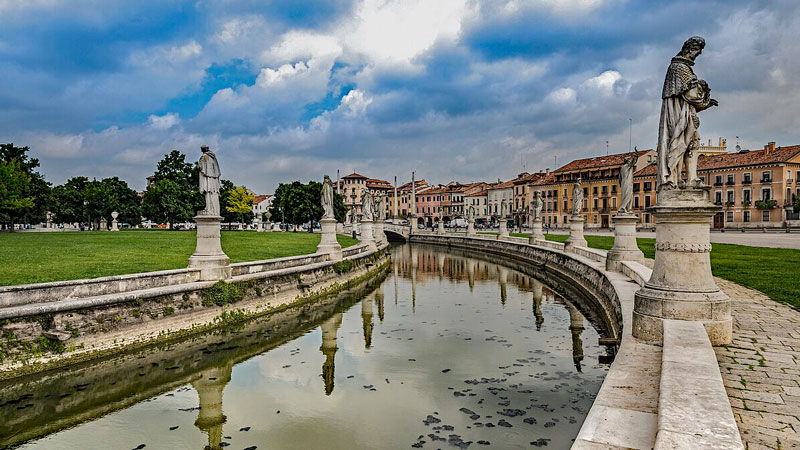
Padua
A picturesque city, with a dense network of arcaded streets opening onto large communal squares, Padua claims to be among the oldest cities in northern Italy. According to legend, the city was founded around 1184 BC by the Trojan prince Antenor. After the Fall of Troy, he led a group of Trojans and their allies, the Veneti, to settle the Euganean plain in Italy. The region then developed into an important center of the Venetians. When a large ancient sarcophagus was unearthed in 1274, officials of the medieval city declared the remains within to be those of Antenor.
While the city was involved in a period of conflict with Venice in the early 13th century, Padua later enjoyed a period of calm and prosperity during which construction of the basilica of Saint Antonio was started and the University of Padua was founded. As it flourished, Padua outpaced that of Bologna, where no effort had been made to expand the revival of classical precedents beyond the field of law, to become a center of early humanist research with first-hand knowledge of Roman poets that was unrivalled in Europe.
Padua came under the rule of the Venetian Republic in 1405 and remained under its control until its eventual demise in 1797. The Venetian Rule did not diminish the cultural development of the city, however, and its university developed into one of the finest in Europe where scholars including Galileo and Galilei taught. The University of Padua is also notable for having awarded the first PhD to a woman, Elena Cornaro, in 1678. In the early to mid-16th century, Venice fortified Padua with new defenses and a series of monumental gates, many of which are still visible to this day
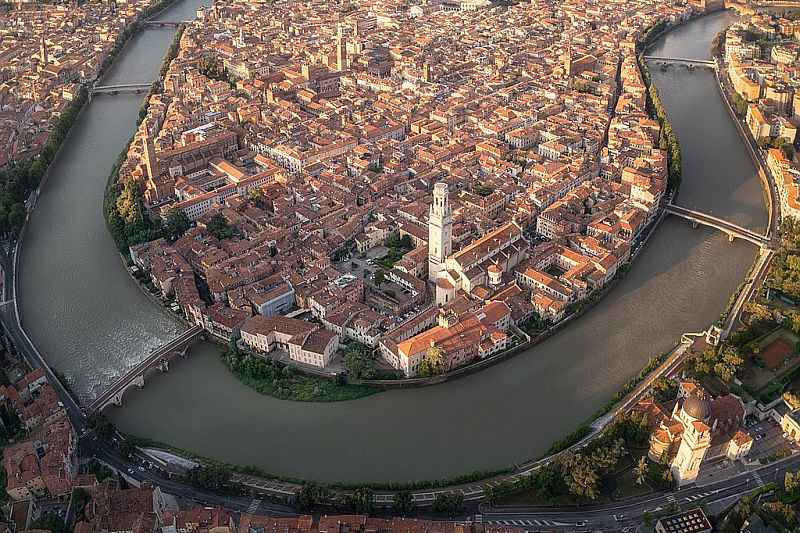
Verona was founded as a Roman city on the Adige River
Situated on the Adige River, Verona is one of the seven provincial capitals of Veneto and and is the second largest city in northeast Italy after Venice.
In late antiquity, the emperors Constantine I and Theodoric spent time in Verona, the latter building a palace in the city. Today, it is most famous for its amphitheater, the third largest in the Roman world, and continues to hold important cultural events. Verona is listed as a UNESCO World Heritage Site.
The general plan of the town, laid out in a regular grid pattern as was common in the Roman world, may have been designed by Vitruvius. Highlights include the amphitheater, several monumental gates, and a theater.
Over the years, Verona became a very important city because of its geographical location. It is at the crossroads of four major Roman roads – the Gallic road from Turin to Aquilieia; Claudia Augusta, from Moderna to Germany; Postumia, from Liguria to Illyria; and Vicum Veronesium, from Verona to Ostiglia – causing it to become an important industrial and commercial gateway to the north and center of Italy, while its port provided access to northern Europe.
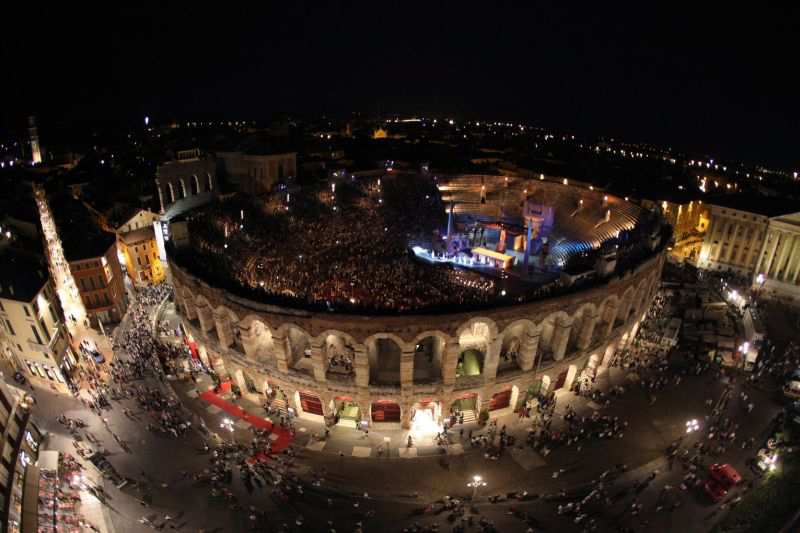
Verona arena - La Bella Vita offers opera cruises
The 1st century amphitheater, known simply as the Arena, is Verona's best preserved Roman monument. Originally, there would have been three towers of arches reaching 30 metres high. Today, however, only two towers survive. Its exterior dimensions cover 152 x 123 meters, making it the third largest such amphitheater, after the Colosseum and Capua. The Arena was originally used to host gladiator, circus, and equestrian events, while today it continues to host concerts and, most famously, an opera season every summer where 20,000 spectators, as in antiquity, enjoy the unique atmosphere of the open-air spectacle.
In 1405, Verona became part of the Venetian Republic, and while this acquisition brought the city peace and prosperity, it also meant it lost its economic well-being and political importance. However, three centuries of peace followed, during which monuments, churches, and palaces were built, and its academies and cultural activities flourished.
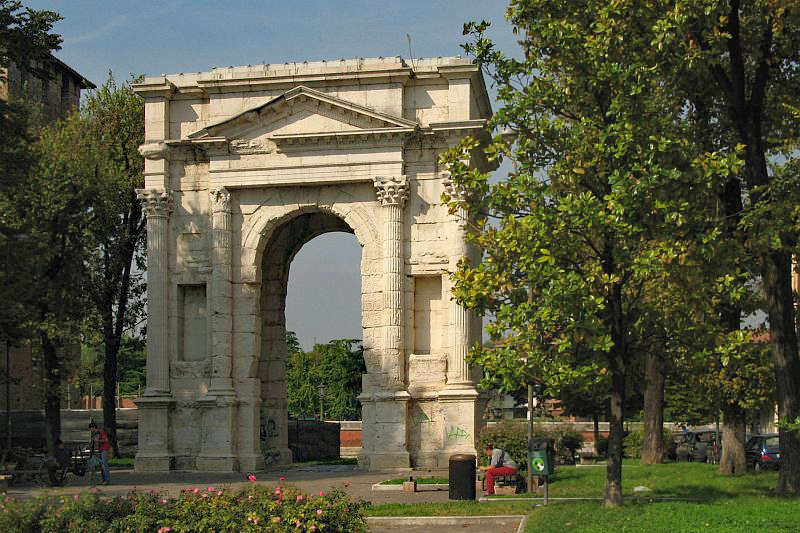
Verona - Arch of Gavi
Dotted throughout the city are many remnants of Verona's once splendid Roman past. The Arch of Gavi was built in the 1st century AD to glorify and commemorate the powerful Gavi family. Typically, triumphal arches commemorated military triumphs or statesmen, and this is a rare example of such a structure honoring a private family. Situated to mark the start of the Via Sacra, the arch once had family statues in its niches, the inscriptions of which still remain.
Beneath the arch is a well-preserved stretch of Roman road with typical polygonal slabs which show the telltale parallel grooves of wheeled traffic. The arch was entirely dismantled in 1805 when Napoleon thought it blocked military traffic. It was restored in 1932. The Bosari Gate was also constructed in the 1st century AD. The gate is built from white Valpolicella stone, acting as the city's main entrance.
The bridge known today as the "Stone Bridge" was one of only two Roman bridges that crossed the Adige. Floods, warfare, and time have taken their toll on the structure, but the two white arches nearest the left bank are original.
Ferrara, a city in Emilia-Romagna in northern Italy, is situated 27 miles (44km) northeast of Bologna on the Po di Volano, a branch channel of the mainstream of the River Po. The city was first settled in the 6th century BC, as attested by a necropolis with over 4,000 tombs that was discovered in the 1920s amid the ruins of the Etruscan town of Spina at the ancient mouth of the Po River. This is evidence that the city must have played a major role in antiquity.
Members of the city's ruling House of Este, notably Lionello and Ercole I, were among the most important patrons of the arts in the late 15th and early 16th centuries. During this time, the city grew into an international cultural center, renowned for its architecture, music, literature and visual arts.
Ferrara's architecture benefitted from the genius of the architect Biagio Rossetto. Ercole requested him to draft a masterplan for the expansion of the city in the 15th century. The resulting "Erculean Addition" is considered one of the most important examples of Renaissance planning in Europe and contributed to Ferrara being selected as a UNESCO World Heritage Site in 1995.
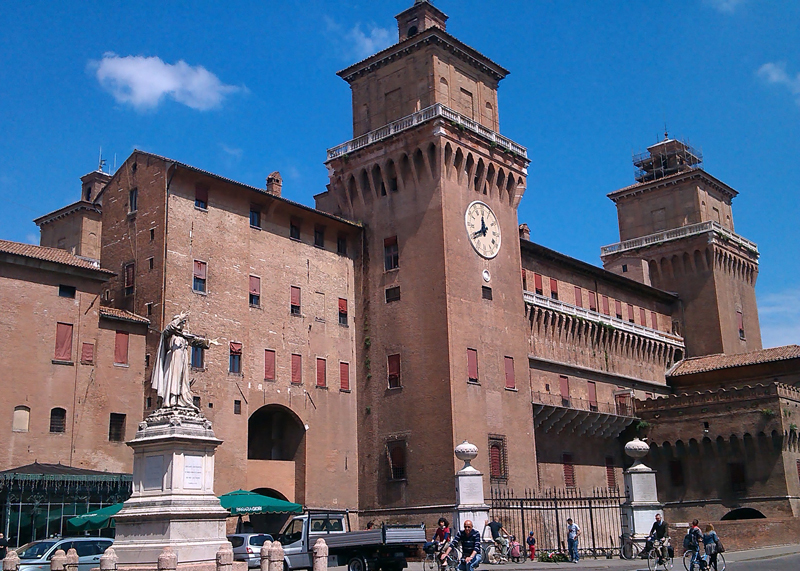
Ferrara - House of Este
The imposing Este Castle, with its four enormous bastions and a moat in the very center of Ferrara, has become an iconic symbol of the city. Constructed in the late 14th century, with the purpose of defending the town from external threats, it also served as a fortified residence for the House of Este in Ferrara.
The Cathedral of Saint George, which was consecrated in 1135, is one of the finest examples of Romanesque architecture in Italy. And, while it has been renovated several times through the centuries, its resulting eclectic style is a harmonious combination of Romanesque, Gothic, and Renaissance architecture.
Close to the cathedral, the 15th century town hall, which also served as an earlier residence of the Este family, features a grandiose marble flight of stairs and two ancient bronze statues of the Este dynasty.
The southern district, the town's oldest, is crossed by a myriad of narrow alleys that date to the early Middle Ages. Perhaps the best-preserved medieval building in Ferrara, the Casa Romei, was the private residence belonging to the eponymous merchant who was related to the Este family by marriage.
The northern quarter, which was added by Ercole I, thanks to the masterplan by Rossetti, features many Renaissance palaces. One of the finest palaces is the Palazzo dei Diamanti, named after the diamond points cut into the facade's stone blocks. The palace houses the National Picture Gallery, with an extensive collection of artwork by the School of Ferrara, which first rose to prominence in the latter half of the 15th century.
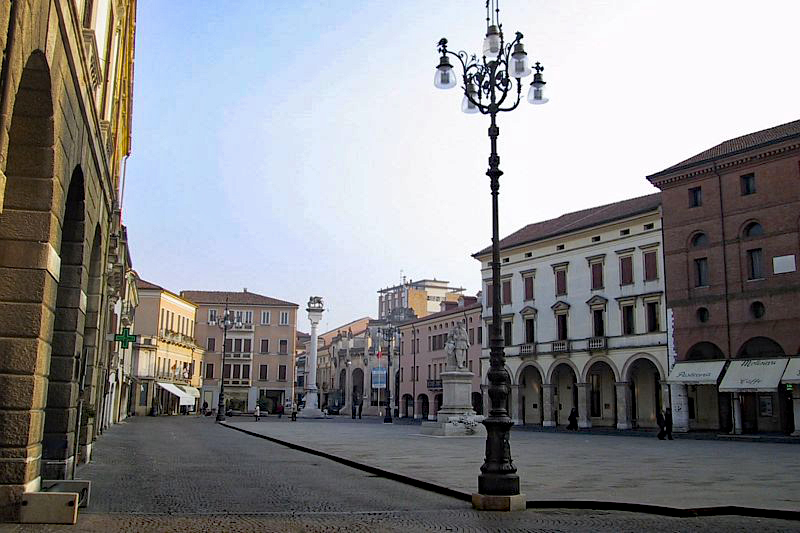
Rovigo is a beautiful example of a Renaissance city
Rovigo, the capital of the eponymous province, stands on the low ground known as Polestine, approximately 50 miles (80km) southwest of Venice and extends between the Adige River and the Canalbianco.
This town was selected to be the temporary residence of the Bishop of Adria following the destruction of his hometown by Hungarian marauders in the 10th century. The viscounts of Rovigo built a series of defenses, including a castle in the town in the 12th century funded by the House of Este, the only remnant of which is the Torre Doná. In 1194, the town became a formal possession of Azzo VI d'Este, Duke of Ferrara, who took the title of count of Rovigo.
The Este influence in the town ended in the late 15th century, when the Venetians took the town by siege and regained control of it until the French Revolution. The town's architecture bears the stamp of both Venetian and Ferrarese influence, and its main sights include its 11th century cathedral, which features artwork by Palma the Younger, the ruins of its 10th century castle, and the Renaissance-style Palazzo Roverella, which today serves as an art gallery.
Mantua was founded by the Etruscans in the 6th century BC on the banks of the Mincio river. Lakes that provide natural protection surround it on three sides. Its name is said to have derived from the Etruscan god Mantus of Hades.
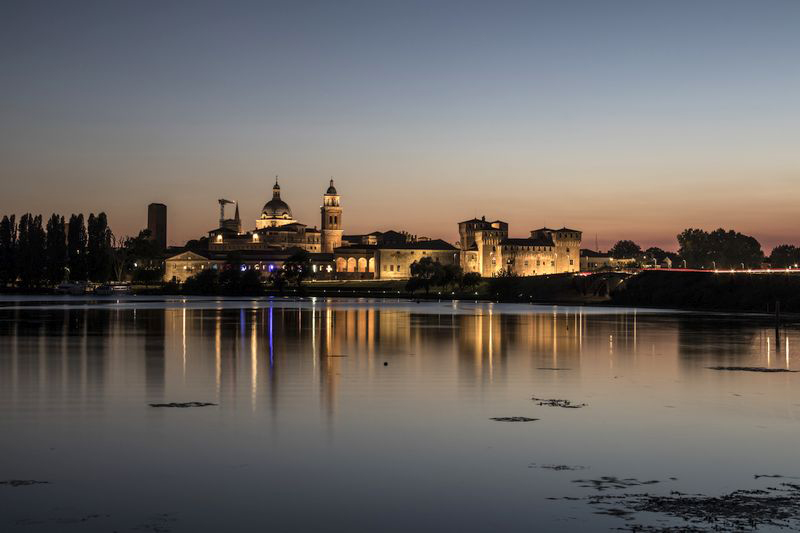
Mantua
After the fall of the Roman Empire, Mantua was invaded in turn by the Byzantines, Lombards, and the Franks. In the 11th century, it became the possession of Boniface of Canossa, marquis of Toscana. The last ruler of the family was the countess Matila of Canossa, who, according to legend, ordered the construction of the precious Rotonda di San Lorenzo. After her death, Mantua became a free city and strenuously defended itself from the Holy Roman Empire in the 12th and 13th centuries. In 1198, Alberto Pitentino optimized the course of the River Mincio, creating what the Mantuans called "the four lakes" to reinforce the city's natural protection.
Under Francesco II Gonzaga, the famous Renaissance painter Andrea Mantegna worked in Mantua as the court painter, producing some of his most outstanding works. The Duke also commissioned Giulio Romano to build the famous Palazzo Te, and profoundly improved the urbanistic assets of the city.
The direct line of the Gonzaga family came to an end in 1627 with the vicious, and weak, Vincenzo II. The town slowly declined under its new rulers, the Gonzaga-Nevers, a cadet French branch of the family. After the War of Mantuan Succession and the besieging of the city by Imperial Landsknecht mercenaries, who unfortunately had brought the plague with them, Mantua never truly recovered. Ferdinand Carlo IV, an inept ruler whose only aim seemed to have been to hold theatrical parties, allied with France in the Spanish War of Succession.
After the latter's defeat, he took refuge in Venice, supposedly carrying with him one thousand pictures. At his death in 1708, his family lost Mantua forever in favor of the Hapsburgs of Austria. Under Austrian rule, Mantua enjoyed a revival during which the Royal Academy of Sciences, Letters and Arts, the Scientific Theater, and numerous palaces were built.
At the center of the city stands its cathedral, which was rebuilt in the 16th century after designs by Giulio Romano.
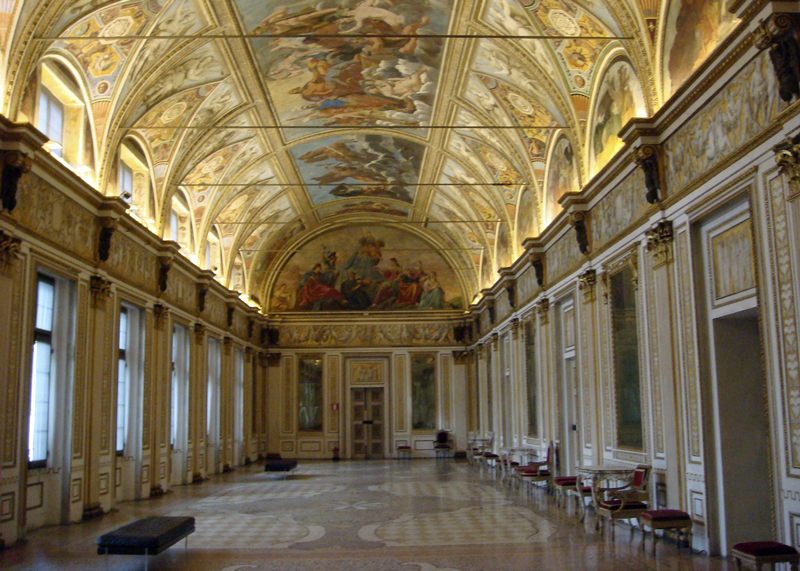
Mantua - The Ducal Palace
The vast ducal palace, called the Reggia of the Gonzagas, stands opposite the cathedral and its apartments contain many valuable works of art. Leon Battista Alberti designed the Church of San Andrea, which shared the privileges of the cathedral.
The city's cultural institutions include the Accademia Virgiliana, containing an 18th century Scientific Theater designed by Antonio Bibiena; the valuable library, founded in 1780 by the Austrian empress Maria Theresa; and the State Archives. The houses of the artists Andrea Mantegna and Giulio Romano have been preserved. In 2008, Mantua was designated a UNESCO World Heritage site.
Parma is famous for its food and rich gastronomical tradition. Two of its specialties are Parmigiano Reggiano cheese and Prosciutto di Parma ham. Parma was appointed to the Creative Cities Network as a UNESCO City of Gastronomy in 2004, the first Italian city to be awarded the recognition.
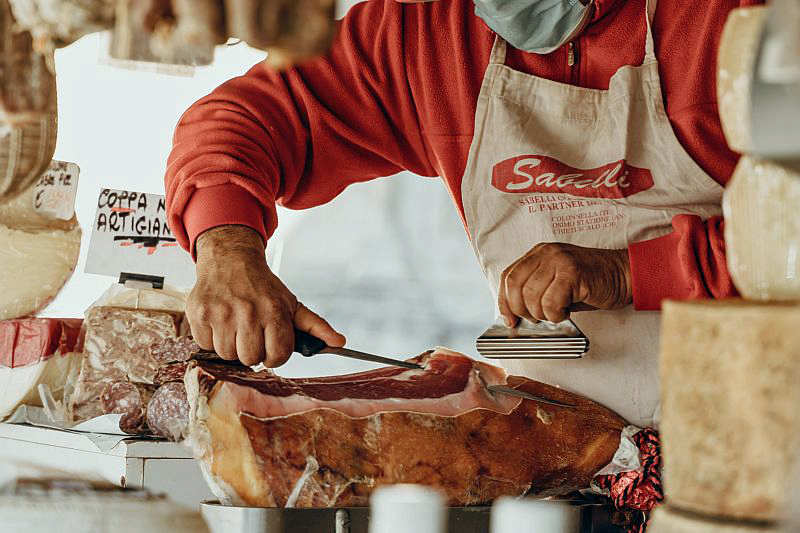
Parma is world-famous for its culinary traditions and delicacies
This city was first settled by the Romans in the 2nd century AD and immediately became an important reference point for all the surrounding plains. The construction of the Via Emilia promoted a profound and rapid development of the city. The accomplished Roman town layout included a forum, theater, amphitheater, temple and also a basilica. It even boasted its very own urban water supply.
After the fall of the Roman Empire, the city was passed under Byzantine control in the 6th century AD, during which Parma was named Crispoli.
In the 12th century, the city's cathedral and baptistery were built, among other grand civic structures. In the centuries that followed, the city fell to a succession of prominent families, including the Visconti's and Sforza's before, finally, the Papacy gained control of Parma.
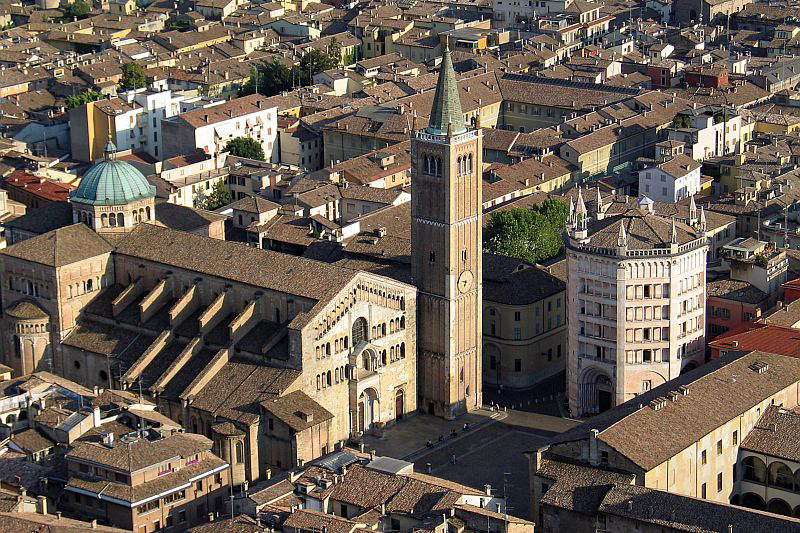
Parma
One of the most important buildings to have been constructed in the city under its rule of the Farnese family is the 16th century Palazzo della Pilotta, which today houses the Museo Bodoniano. Several schools of painting also started around this time, the most notable being those of Correggio and Parmigianino.
In the second half of the 18th century, the city enjoyed something of an artistic revival after it fell under the influence of Marie Louise of Austria, the wife of Napoleon I, who is said to have helped shape the city's newfound elegance.
Cremona is located on the left bank of the River Po in Lombardy. It is especially noted for its musical history and traditions, including some of the earliest and most renowned luthiers, such as Giuseppe Guarneri, Antonio Stradivari, and several members of the Amati family.
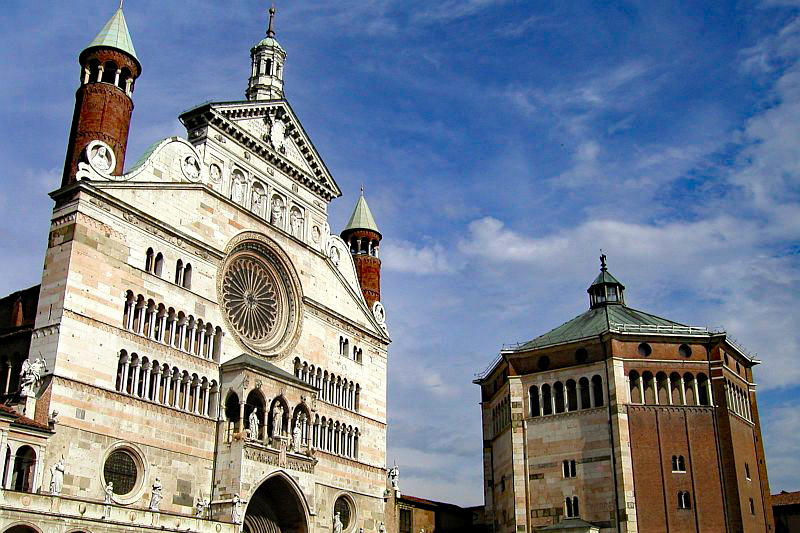
Cremona Cathedral
The city was born as a simple village inhabited by Gauls, who worked as ferrymen on the River Po. Because of its geographical position as a major transit point, Cremona drew the attention of the Romans, who turned the village into an important regional center. Cremona was officially founded in 219 BC, after which it was inhabited by nearly 6,000 Romans. The city enjoyed the confidence of Rome and even had a legislative autonomy with its own Senate.
In the late 2nd century AD, thousand more Roman farmers settled in the city. Relations with Rome became even more friendly, thanks in part to Cremona's assistance in the fight against the Gauls and even Hannibal.
With the fall of the Roman Empire, however, the city was governed by the powerful Vescovi-Conti, who defended the city vigorously. Around the year 1000, after fierce struggles against its lords, Cremona transformed itself into a municipality.
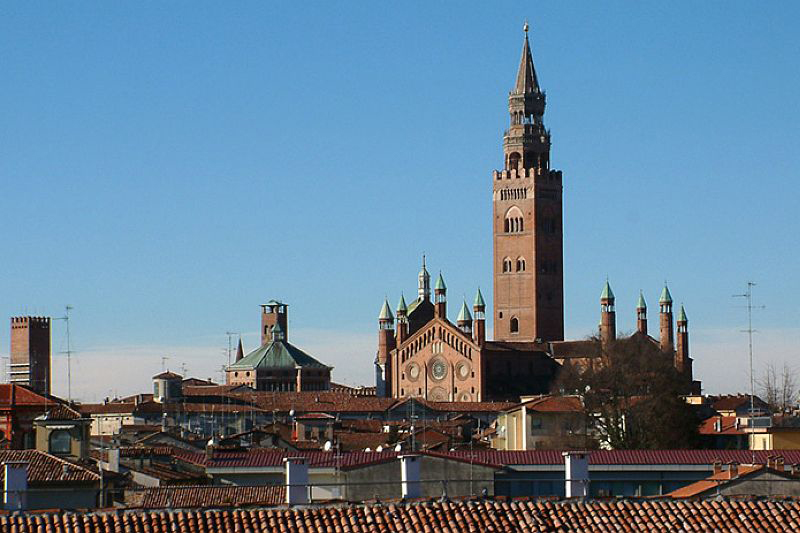
Cremona
By the 12th century, Cremona was one of the most powerful such cities in Italy and expanded its domain into the surrounding territory. The city is most famous, however, for its musical legacy. The 12th century cathedral of Santa Maria Assunta was a focus of organized musical activity in the region during the Late Middle Ages, and by the 16th century had become a famous musical center. Composer Marc'Antonio Ingegneri taught at the school with Laudio Monteverdi being one of his most famous students, before leaving for Mantua in 1591. Cremona was also the birthplace of Pierre-Francisque Caroubel, a collaborator with noted German composer Michael Praetorius.
The bishop of Cremona, Nicolò Sfondrati, a fervent supporter of the Counter-Reformation, became Pope Gregory XIV in 1590, and a fervent patron of music.
From the 16th century, Cremona became renowned as a center of musical instrument manufacture, with the violins of the Amati and Rugeri families and later the workshops of Guarneri and Stradiveri.
To this day, their handmade work is widely considered the summit of achievement in stringed instrumentmaking, and the city continues to be considered as a major center for producing high-quality instruments. In 2012, UNESCO declared the "traditional violin craftsmanship in Cremona" an intangible cultural heritage.